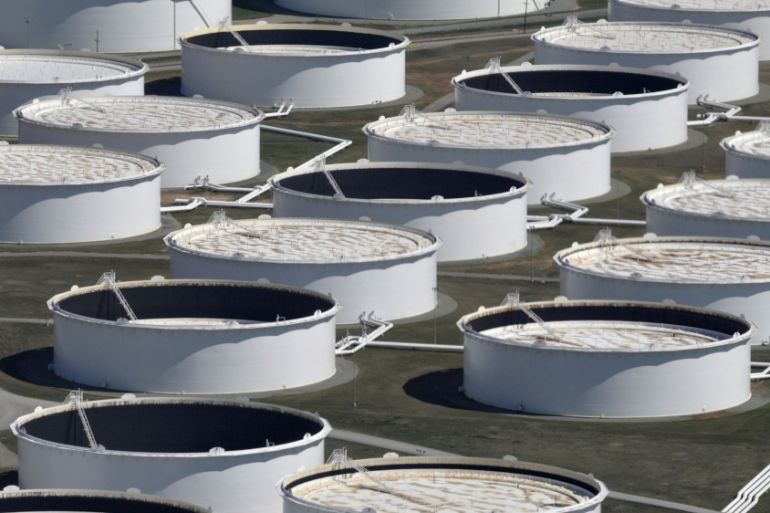Brent and US oil rebound after two days of historic losses
Boost came on hopes of more supply cuts from OPEC and word that US inventory builds are less dire than anticipated.

Brent crude oil rebounded from two days of losses and US futures surged on Wednesday, bolstered by tentative discussions of additional supply cuts from OPEC producers and US inventory builds that were less dire than some anticipated.
Oil trading has been more volatile than ever in recent days, as the market has become overwhelmed by a growing supply glut and catastrophic declines in demand as governments order people to stay at home, restricting travel and halting daily life, to stop the spread of the coronavirus.
Keep reading
list of 3 itemsCan Saudi Arabia really afford to wage an oil price war?
Trump officials to seek House approval for crude oil purchases
US futures fell deep into negative territory on Monday, closing a record minus $37.63 a barrel, while Brent touched its lowest level since June 1999 early on Wednesday.
As of 3:06pm EDT, Brent, the global benchmark, was up 7.71 percent at $20.82 a barrel. Earlier in the session, the global benchmark fell to $15.98, its lowest since June 1999.
US West Texas Intermediate (WTI) crude futures for June delivery rose $2.56, or 22.13 percent, to $14.13 a barrel.
Since the start of the year, Brent has fallen more than 68 percent, while WTI has dropped around 75 percent.

The world’s major oil producers, led by the Organization of the Petroleum Exporting Countries and its allies, attempted to wrest control of spiralling inventories by announcing a collective cut of 9.7 million barrels per day (bpd) in supply in early April.
But those cuts will come too slowly to offset rising inventories, which hit 518.6 million barrels in the US last week, just 3 percent off an all-time record, the Energy Department said.
“If storage continues to increase at the end of the day, which seems likely considering all these Saudi barrels knocking at the door, then we are going to get to maximum storage sometime in the not so distant future,” said Bob Yawger, director of futures at Mizuho in New York.
Saudi Arabia on Tuesday said it was ready to take extra measures with other producers and Iraq made similar comments. The Saudi finance minister also said Riyadh may borrow around $26bn more this year and will draw down up to $32bn from its reserves to finance a government deficit caused by the slump in oil prices.
Reuters also reported that the Saudi supertankers headed for US shores with 40 million barrels of oil may be looking to reroute amid growing pressure in the US to turn them around.
The next formal meeting by OPEC and allies, a group known as OPEC+, is in June.
Even without another formal agreement, decreasing storage capacity and falling demand could force producers to cut more. An OPEC source told Reuters news agency that it was “logical” to expect the market to force more cuts on OPEC+ producers.
US crude inventories rose 15 million barrels last week, in line with analysts’ expectations, though some even predicted a build of more than 20 million barrels.
Meanwhile, US gasoline stocks rose by just 1 million barrels, less than expected, while product supplied, a proxy for demand, increased modestly for the first time in weeks.
This week the front-month US contract fell below zero for the first time ever ahead of its Tuesday expiry as panicking traders paid customers to take oil off their hands so they would not have to take delivery with nowhere to store the surplus.
Inventories at the Cushing, Oklahoma, delivery hub for WTI are nearly full, at almost 60 million barrels, with much of the rest leased already.